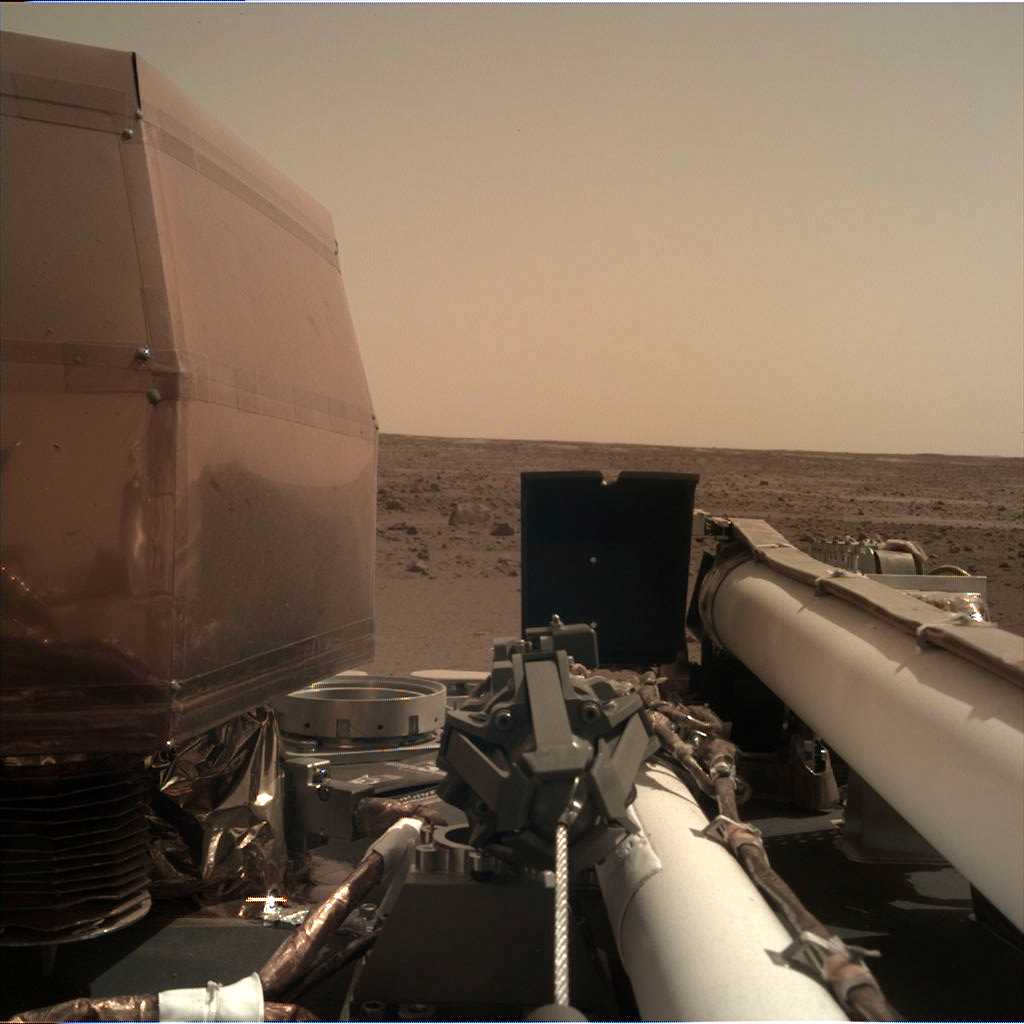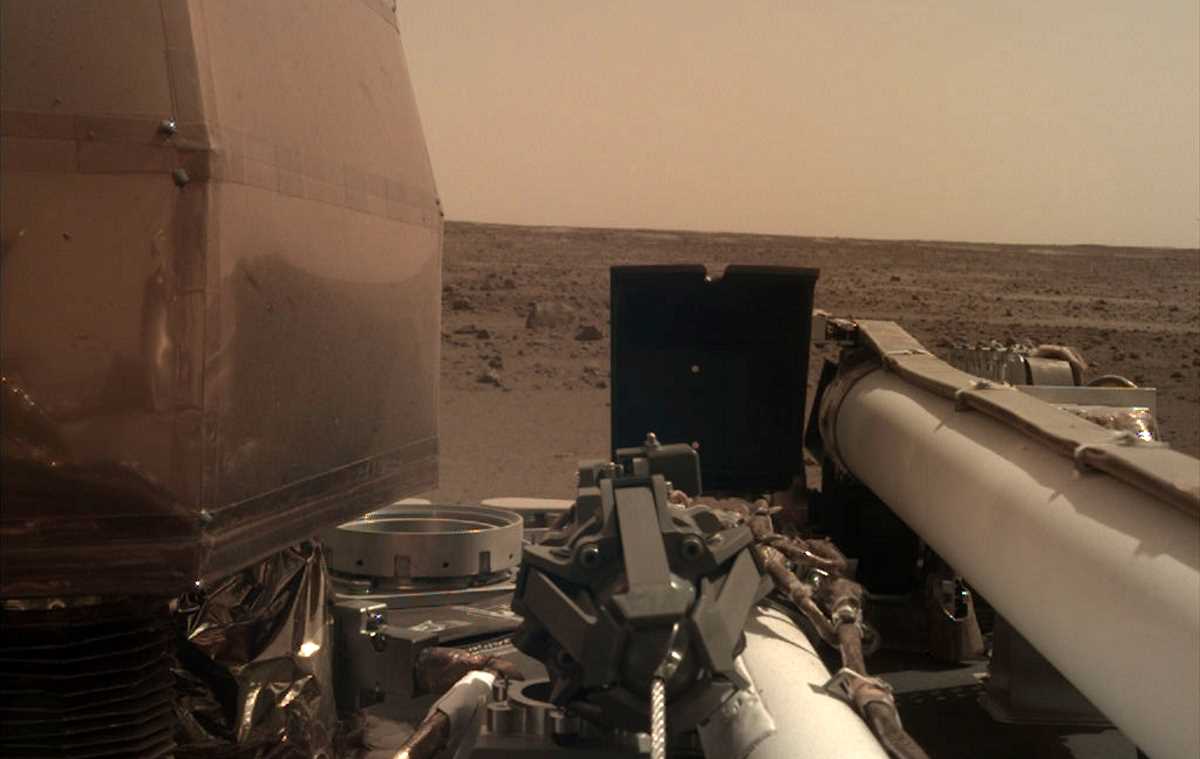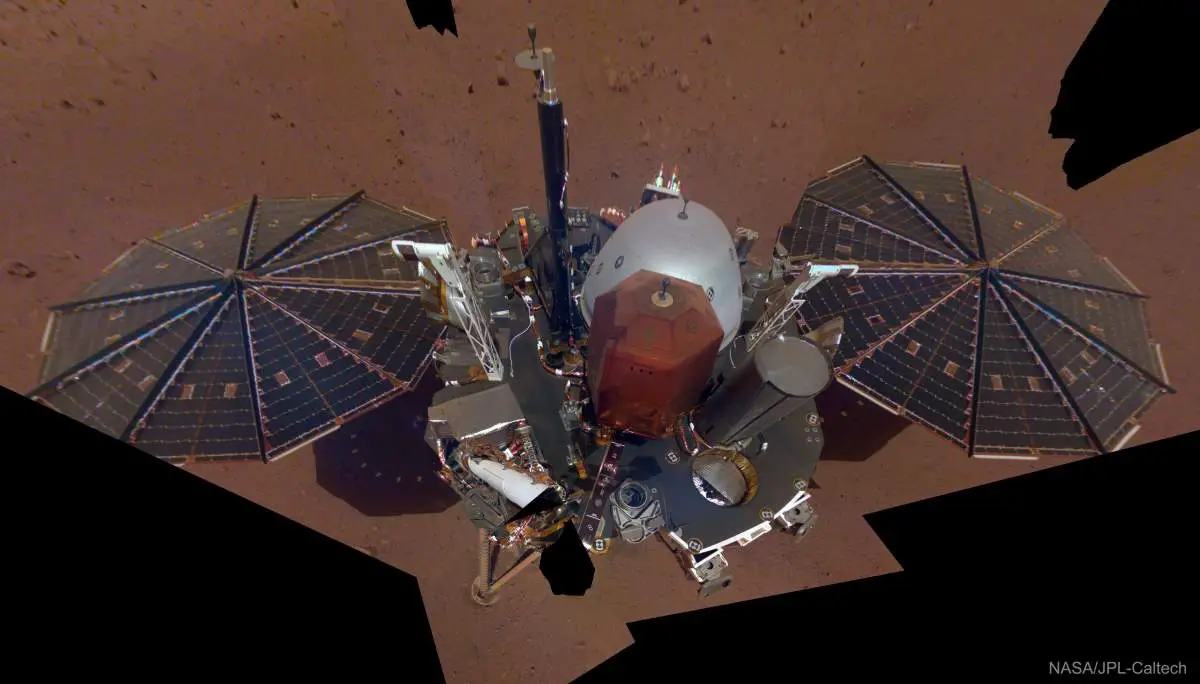In December 2018, NASA’s Mars InSight Lander recorded the sounds of Mars for the first time ever. Musician Andrew Huang made music using the real Mars sounds.
You can download full-length uncompressed .wav files from NASA.gov/sounds

Two very sensitive sensors on the InSight lander detected these wind vibrations: an air pressure sensor inside the lander and a seismometer sitting on the lander’s deck, awaiting deployment by InSight’s robotic arm. The two instruments recorded the wind noise in different ways. The air pressure sensor, part of the Auxiliary Payload Sensor Subsystem (APSS), which will collect meteorological data, recorded these air vibrations directly. The seismometer recorded lander vibrations caused by the wind moving over the spacecraft’s solar panels, which are each 7 feet (2.2 meters) in diameter and stick out from the sides of the lander like a giant pair of ears.
This is the only phase of the mission during which the seismometer, called the Seismic Experiment for Interior Structure (SEIS), will be capable of detecting vibrations generated directly by the lander. In a few weeks, it will be placed on the Martian surface by InSight’s robotic arm, then covered by a domed shield to protect it from wind and temperature changes. It still will detect the lander’s movement, though channeled through the Martian surface. For now, it is recording vibrational data that scientists later will be able to use to cancel out noise from the lander when SEIS is on the surface, allowing them to detect better actual marsquakes.
When earthquakes occur on Earth, their vibrations, which bounce around inside our planet, make it “ring” similar to how a bell creates sound. InSight will see if tremors, or marsquakes, have a similar effect on Mars. SEIS will detect these vibrations that will tell us about the Red Planet’s deep interior. Scientists hope this will lead to new information on the formation of the planets in our solar system, perhaps even of our own planet.
Sources
- “NASA InSight Lander ‘Hears’ Martian Winds” on NASA website
- Space Shuttle Endeavour’s Touchdown Meets Columbia’s Salute [An amazing photo from the past] - February 29, 2024
- Moon Landings: All-Time List [1966-2024] - February 23, 2024
- From Orbit to Ordinary: 10 Earthly Applications of Space Technology - January 23, 2024

